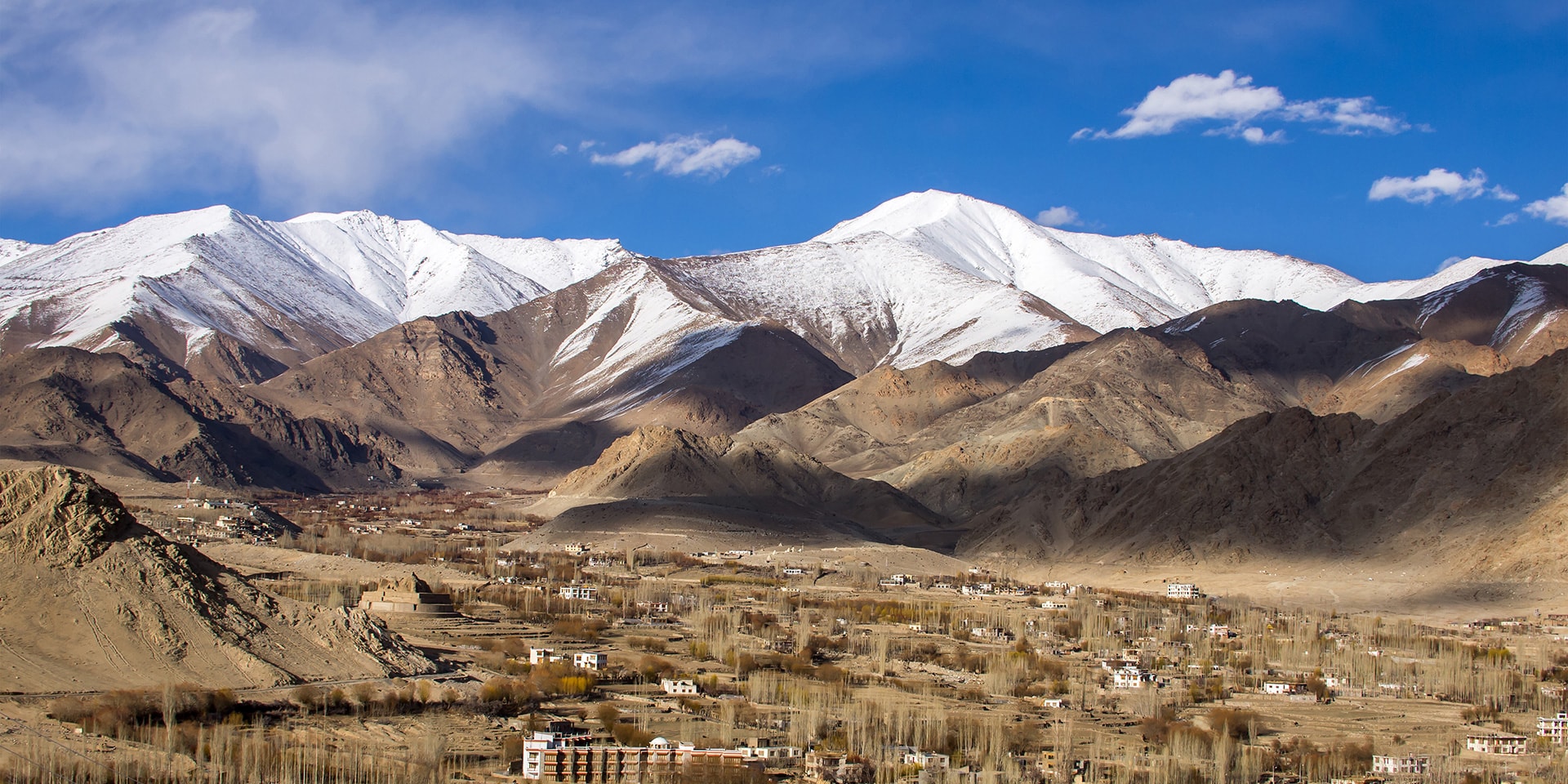
Ladakh
Ladakh located in the Indian state of Jammu and Kashmir. It is one of the most sparsely populated regions in the state and renowned for its remote mountain beauty and culture. Located over 3,000m, Ladakh is the highest plateau in the state of Jammu & Kashmir and extends from the Himalayas to the Kunlun Ranges and includes the upper Indus River Valley.
Leh has been an important stop during trade routes from as early 1500 years ago. Today it is the capital of Ladakh and the location of the Leh airport, making it the starting point of most tourists. Leh (and Ladakh) is cold from October to early April with temperatures well below 0 degrees during winter. The best time to visit is from May to August.
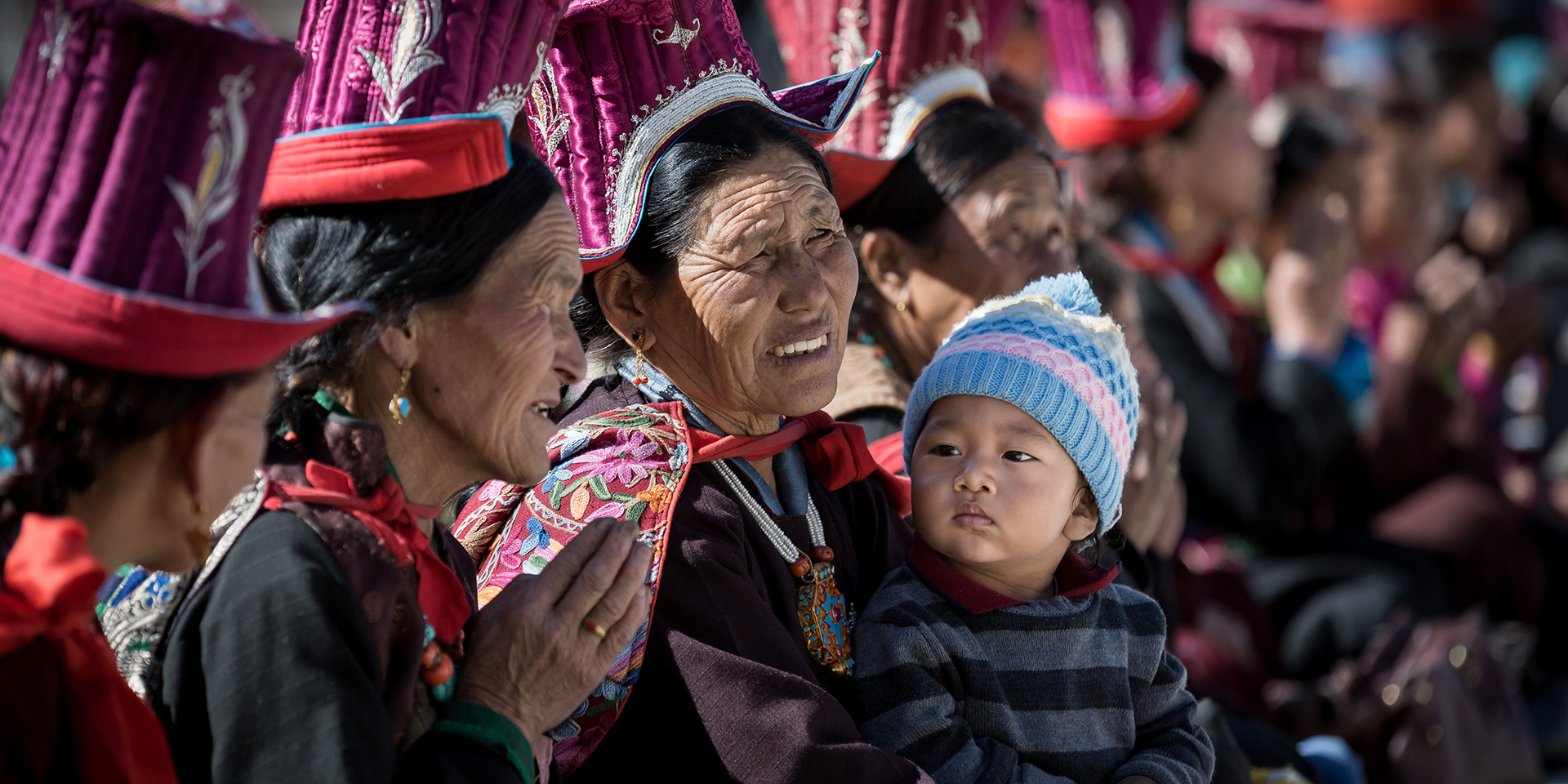
Stok is where the biggest outdoor Sakymuni Buddha statue is located. This Buddha statue, with Lord Atisha’s relic enshrined inside was completed and consecrated by HHDL in Aug 2016 and was greatly supported by Singapore community of Buddhists. It sits in the middle of the hill where people can see this 73 feet golden statue from miles away.
With a throne seat chamber underneath the Buddha that can accommodate 200 people, the four walls and ceilings are painted with the images of the lineage masters of the four main schools of Vajrayana Buddhism and various mandalas. The remaining part of the complex is in construction and will eventually house classrooms and a library to serve not only the local community, but also villages from afar.
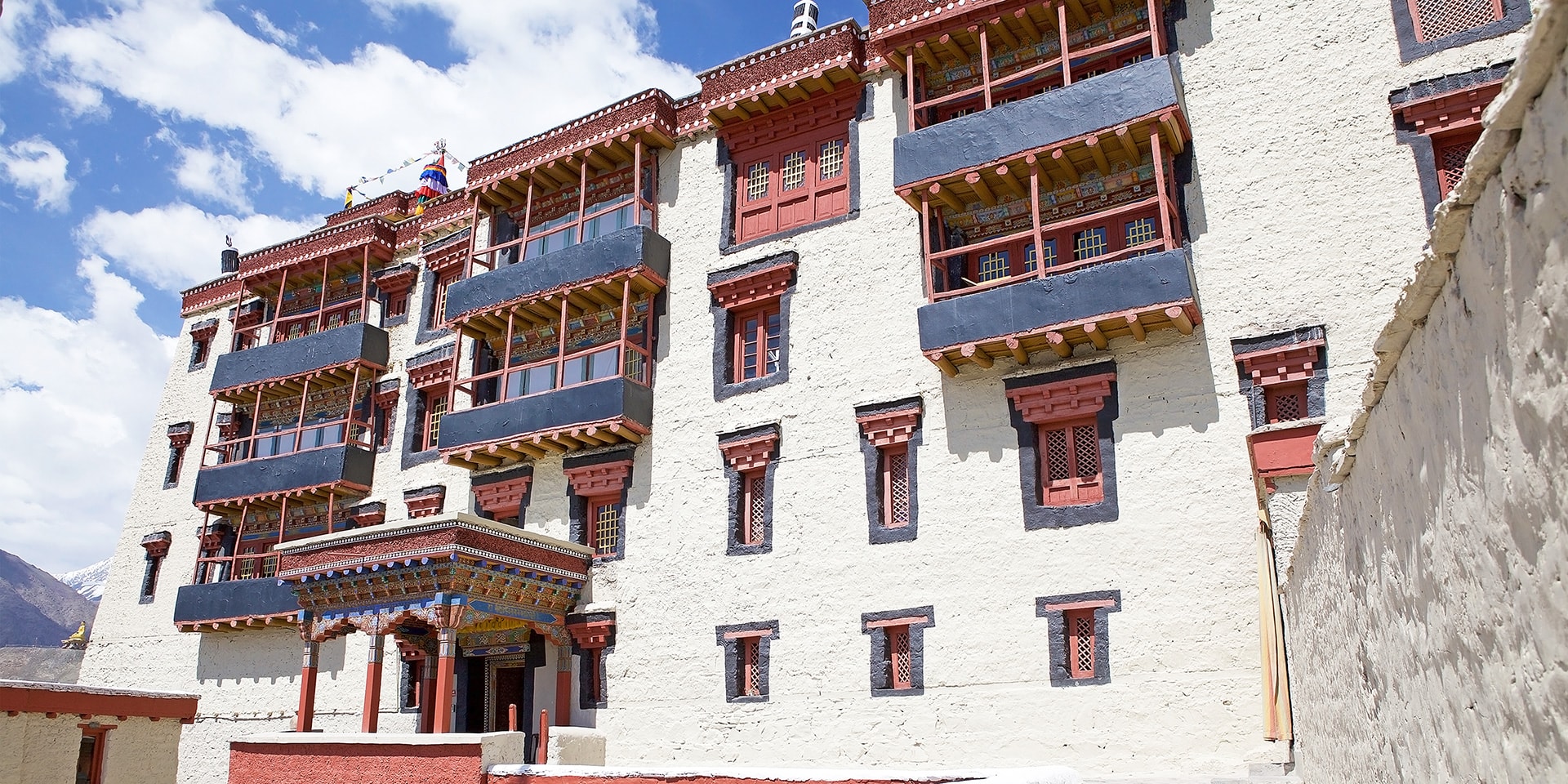
The Stok Palace Museum is a four- story palace that was the former official residence of royal family of Ladakh. Constructed in 1814 by Ladakh's last ruler, it is located a short distance across the Indus River, near Leh. There are more than 80 rooms, but of which only five are opened to the public. In this small museum, there are intriguing collections of Buddhist art, weaponry, coins, seals, thangka paintings and other items from the royal household. The best pieces are probably the Queen's ceremonial jewelery and ceremonial headgear of the rulers. Most of the collections of thangkas and paintings date back to 450 years ago.
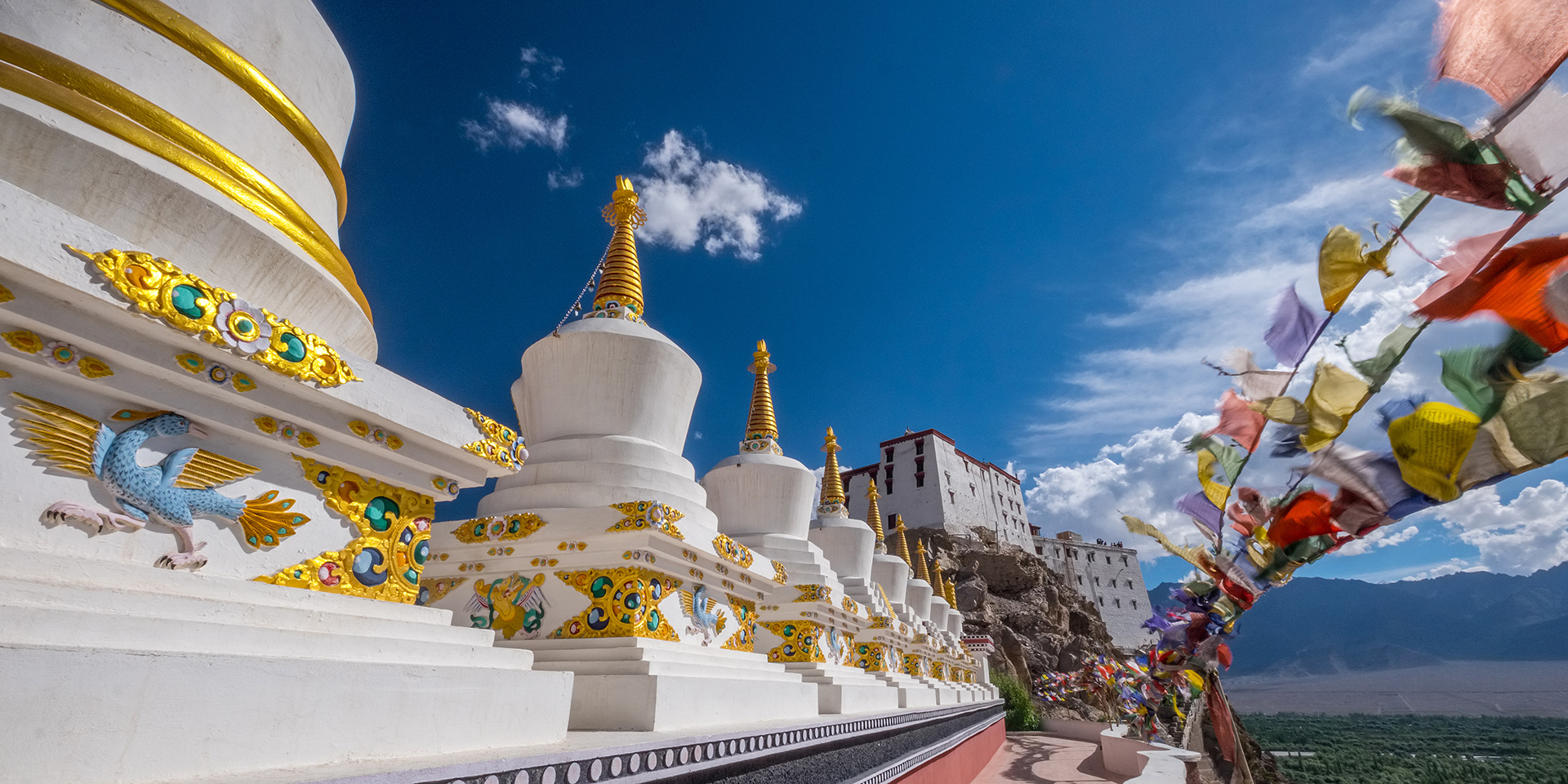
Thiksey Monastery is located on top of a hill in Thiksey area, approximately 19 km east of Leh. The monastery is of Gelug tradition and located at an altitude of 3,600 metres (11,800 ft) in the Indus Valley. A twelve-story complex, it houses many items of Buddhist art such as stupas, statues, thangkas, wall paintings and swords.
Noted for its resemblance to the Potala Palace in Lhasa, Thiksey is the largest monastery in central Ladakh. A major attraction within Thiksey is the statue of the Maitreya Buddha, erected to commemorate the visit of the 14th Dalai Lama in 1970. The Maitreya Buddha statue is 15 metres (49 ft) high, made with clay, gold paint and copper and took four years to complete. The statute covering two stories of the building, is unusually portrayed as seated in the lotus position rather than his usual standing or sitting posture on a high throne.
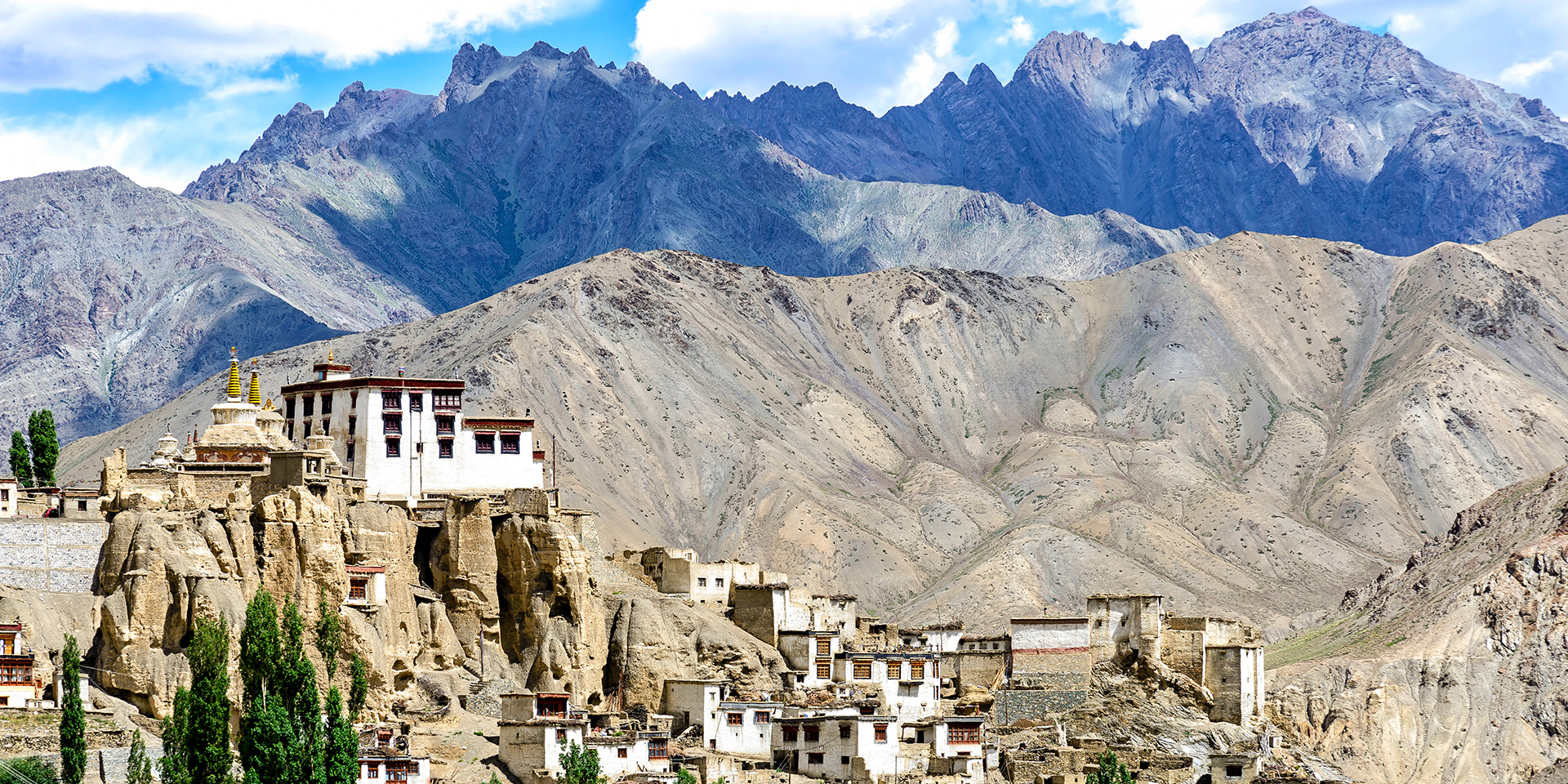
Lamayuru Monastery is 127km from Leh and located within Moonland. At an altitude of 3,510meters, Moonland is dubbed as “moonscape” due to the volcanic formation of the region. Lamayuru, also known as Yung Drung, is amongst the oldest monasteries in Ladakh. It was founded by Naropa, the lineage master of Kagyud sect in the 11th century. Till today, the cave where Naropa meditated still forms part of the shrine and is still well preserved.
It was built on a self-arising swastika where it is also called the Land of Liberation. In the past, prisoners can escape death if they can send their hat to this place before execution. In 1038 the great translator Richen Zangpo (958-1055) built five temples here. One of them is still in perfect condition today. This monastery is home to more than 150 monks and houses a rich collection of artifacts, wall paintings, thangas, statues, carpets and an impressive 11-headed, 1000 eyed image of Chenrezig.

The white domed shape stupa in Chanspa, the Shanti Stupa, on a hilltop in Leh district, was built by Japanese monk Nakamura for world peace pagoda mission in 1991. The Shanti Stupa holds the relics of the Buddha at its base, enshrined by the 14th Dalai Lama. It has become a tourist attraction not only due to its religious significance but also due to its location which provides panoramic views of the surrounding landscape. Circumambulation round the stupa is supposed to purify one’s negative karma.
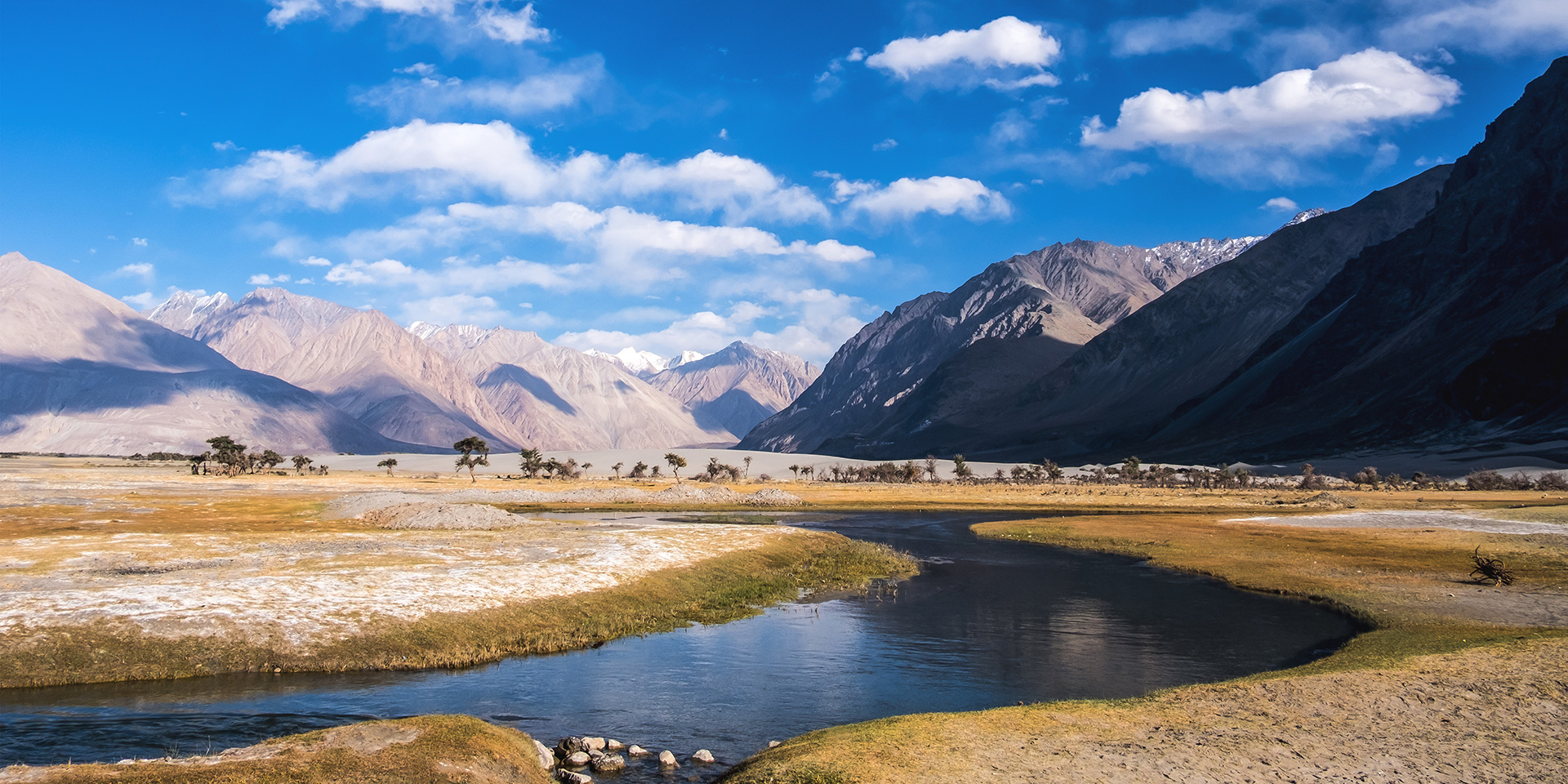
Talk to our travel representative for more information now!
< You may read about our Disclaimer, Privacy and Data Protection Policy, Terms & Conditions and FAQs here. >




